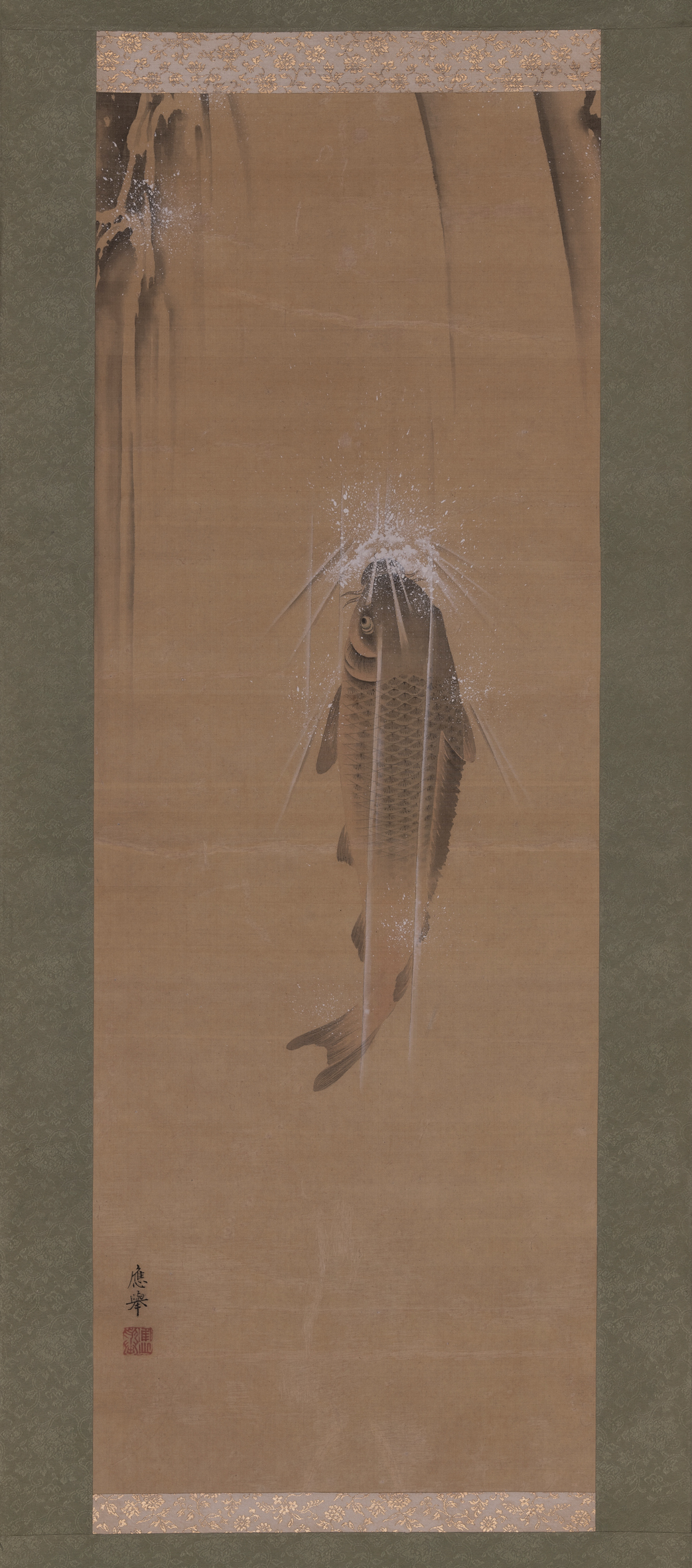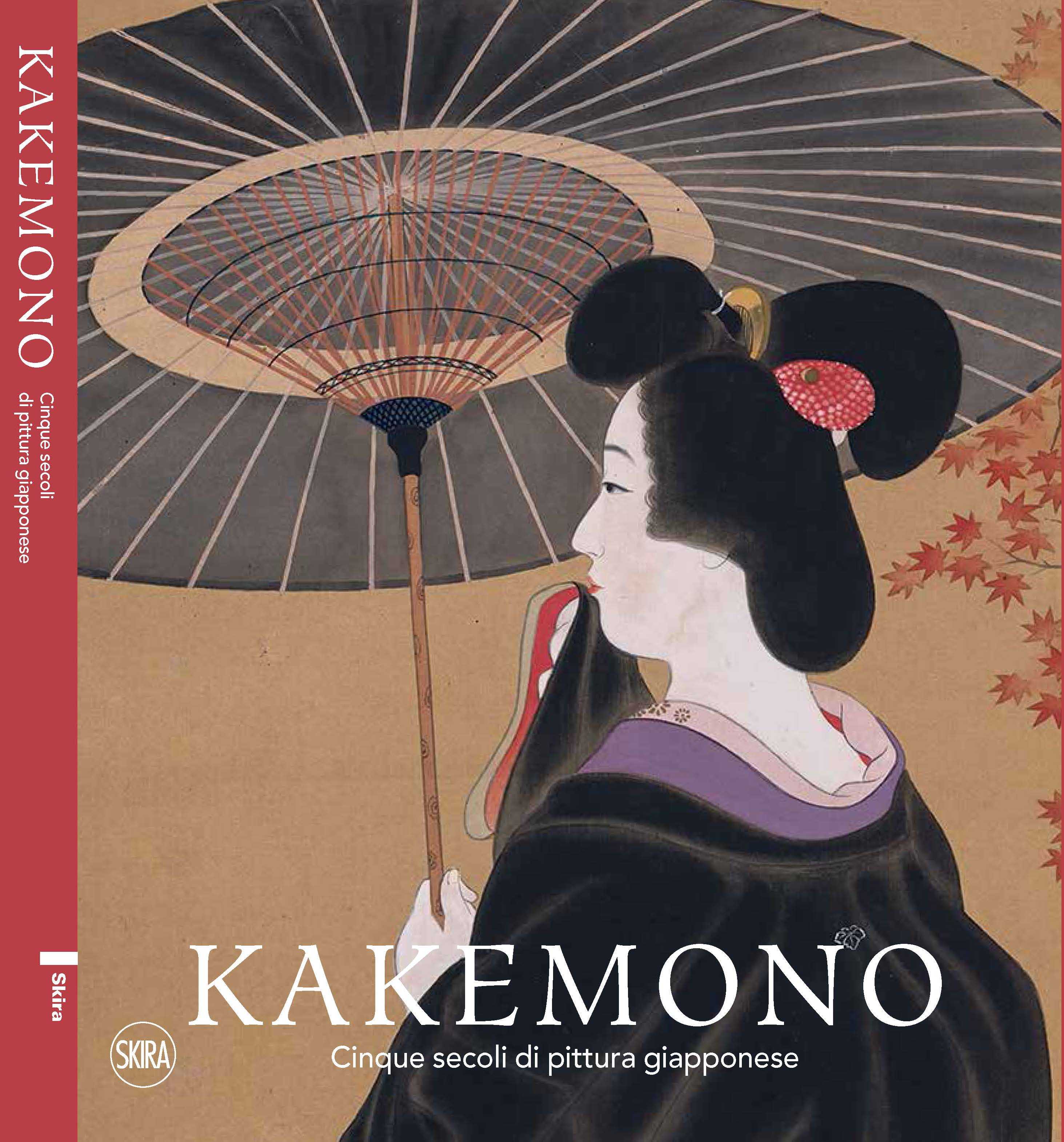Museo delle Culture uses cookies to improve the user experience. If you need more information click on the privacy page. Privacy policy X
17 July 2020 - 11 April 2021, VILLA MALPENSATA, SPAZIO MOSTRE (1° e 2° piano)
On the first and second floor of Villa Malpensata, MUSEC hosts KAKEMONO, the largest exhibition ever devoted to Japanese painting.
After the twentieth century's art, read through the lens of primitivist sculpture, and after the Borneo's masterpieces of ethnic art, MUSEC proposes an in-depth examination of Oriental art. Since 2005, Oriental art is one of the Museum’s research and development hubs.
The exhibition, curated by Matthi Forrer, explores five centuries of Japanese figurative tradition, between the sixteenth and twentieth centuries, through 90 kakemonos organized following a thematic path. The subdivision of the exposition allows to explore in depth the substance of kakemono’s pictorial languages coming from the unpublished collection, philologically collected by doctor Claudio Perino (Turin).
The exhibition, developed by the Fondazione Culture e Musei of Lugano and the Fondazione Torino Musei, is supported by the City of Lugano, the Republic of Canton Ticino, SWISSLOS Fund and the Fondazione Ada Ceschin and Rosanna Pilone.

«Kakemono – states Francesco Paolo Campione, director of MUSEC – is a project born with a clear idea: to narrate five centuries of Japanese art history, by taking the public in an emotional journey of forms and subjects. A journey able to convey the uniqueness of visual representation in Japanese civilization».
«The exhibition at Villa Malpensata – continues Campione – is a new chapter in the study of Japanese creativity and cultural traditions. MUSEC started the research started fifteen years ago through the exhibition dedicated to the submarine photographs of Hèkura fisherwomen, realized by Fosco Maraini in 1954. It continued with several other chapters, such as the one on erotic prints (shunga) and the one nineteenth century hand-colored photography; masterpieces of which MUSEC possess by far the largest collection in the world, composed by over 16’000 pieces».
The Kakemono, a very common style in East Asia, involves a precious roll of fabric or paper, painted or calligraphed, hung on walls during special occasions or used as decoration based on the seasons of the year.
In contrast to western canvases or boards, kakemonos are softly structured and designed for a chronologically limited use, inasmuch they participate in time and movement. Usually, kakemonos are exhibited in the alcove of Japanese houses or left swinging outdoor during the tea ceremony. The variety of subjects represented, describes the intagible beauty and the passing of time, reflecting a purely oriental aesthetic and philosophical conception.
«As Japan – Matthi Forrer writes in his catalogue essay – started to recognize the Chinese as their superior, their big brothers, so to say, in many fields, such as the arts, crafts, and technology, they also came to recognize the importance of the Chinese literary and theoretical sources on painting. […] As Chinese painting was mostly in ink, and either on paper or in silk – their rules even warning against the use of colors, unless really necessary – Japanese painting traditions under Chinese influence are also mostly ink on paper, the so called suibokuga. This style of painting, starting from the fourteenth century, would rather be formalized in the oftentimes quite academic Kanō tradition».
Among the subjects most commonly represented, there were ferocious animals such as dragons and tigers, or plants, flowers and birds; all loaded with symbolic meanings that contributed to establish and consolidate the social status of the piece’s owners.
The Kanō school exponents founded a widespread network of painting academies throughout Japan, which from the fifteenth century to the end of nineteenth century enjoyed the support of the ruling classes. The samurai, the Buddhist clergy and the wealthy relied on them to produce kakemono, according to the fashion of the period.
From the 17th century onwards, an emerging urban class of craftsmen and merchants encouraged the development diversified pictorial interpretations that focused on naturalistic subjects and real-life scenes.
Further painters emerged from the rigidity of these traditional patterns, supporting the innovation and development of personal styles.

Maruyama Ōkyo (Kyoto, 1733-1795)
A carp (koi) climbs up a large waterfall in order to cross the Gate of the Dragon and turn into a dragon itself. Around 1785. Ink painting and touches of color on silk, 98.3 x 35.1 cm
The exhibition itinerary is divided into five thematic sections (Flowers and birds; Anthropomorphic figures; Animals; Plants and various flowers; Landscapes) and proposes a selection of works of the major artists of that time, such as Yamamoto Baiitsu (1783-1856), Tani Bunchō (1763-1840), Kishi Ganku (1749-1838), Ogata Kōrin (1658-1716).
The exhibition begins with paintings of flowers and birds (kachō-ga) playing on an allegorical association taken from haiku poems, and continues with the representation of anthropomorphic figures, at first limited to certain Buddhist divinities, to followers or disciples of the Buddha, to portraits of Shintoist figures, or even to characters borrowed from the Chinese tradition. It was only in the eighteenth and nineteenth centuries that ordinary people started to be represented.
From the analysis of the iconography of animals which, unlike the one of birds, are represented in a meagre way, we come to the section of paintings that propose plants and flowers, which are related to months and seasons.
Among plants, bamboo has an important symbolic meaning that conveys a sense of flexibility, resistance and security. For many scholars and literates, the pictorial representation of bamboo was a very important exercise, closely linked in technical characteristics to calligraphy, so much so that some artists dedicated their whole life to it.
The exhibition ends with landscape paintings that convey an idealized concept of nature. These artworks often depict rivers, lakes, watercourses, ponds or streams in the foreground and mountain peaks in the background and, on a smaller scale, bridges, temples, pavilions, buildings and small human figures. It is interesting to note that this genre is almost always realized with just ink, along with occasional notes of color.
The itinerary is enriched by two original Samurai armor and a selection of nineteenth century Japanese photographs lacquer albums, from the MUSEC collections
Edited by Matthi Forrer and produced in collaboration with the Fondazione Culture e Musei of Lugano and the Fondazione Torino Musei, the catalogue offers and excursus into the discovery of Japanese painting from sixteenth to nineteenth centuries, though a selection of 180 kakemonos from the outstanding Perino Collection.
The catalogue includes:
Matthi Forrer (Amsterdam, 1948), author and expert in Japanese art and culture, is professor of material culture of pre-modern Japan at the University of Leiden.
Matthi Forrer, KAKEMONO. Five centuries of Japanese painting. The Perino Collection. SKIRA, Milano, pp.208, ISBN 978-88-572-4421-8. CHF40.
